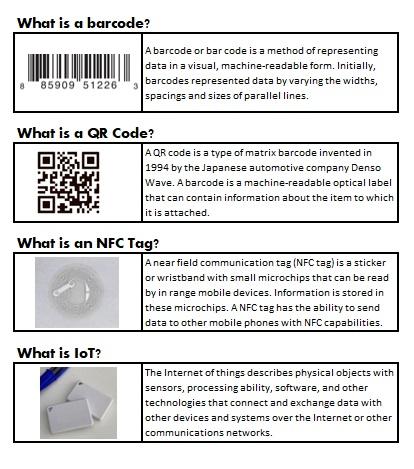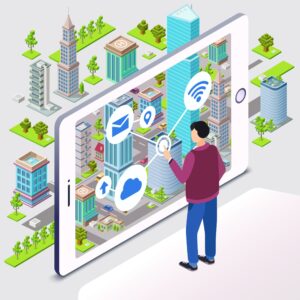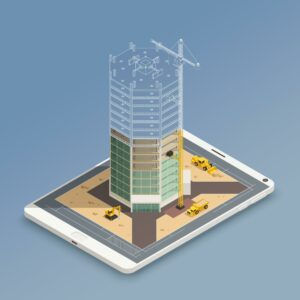IoT stands for Internet of Things. It’s a network of everyday devices and objects that have sensors and software, and can connect to the internet to share data. There are several different types of IoT sensors that you may even encounter in your day to day life, For example, a smart thermostat in a home or office. The thermostat contains a temperature sensor that collects data on the current temperature, and through its connection to the internet, can be controlled remotely to adjust the temperature as needed. The device can also collect data on temperature patterns and usage over time, allowing the homeowner or building manager to make informed decisions about energy use and cost savings. Other examples of IoT sensors include air quality sensors, motion detectors, and moisture sensors

The Internet of Things (IoT) has revolutionised the way businesses manage their assets. IoT sensors can be used to track and monitor the performance and condition of assets in real-time, providing valuable insights that can improve efficiency, reduce costs, and increase revenue. However, there are also some potential downsides to using IoT sensors that should be considered before deciding if that is the correct decision for your business / organisation.

Image by vectorpouch on Freepik
Real-time monitoring: IoT sensors can be used to continuously track and monitor the performance and condition of assets, providing real-time data that can be used to identify and address issues before they become serious problems.
Real-time monitoring is a key advantage of the Internet of Things (IoT) because it allows organisations to quickly identify and address issues with their assets. This can lead to improved efficiency, reduced downtime, and lower costs. For example, in manufacturing, IoT sensors can be used to monitor the performance and condition of equipment, allowing maintenance teams to predict and prevent potential failures. Additionally, in transportation and logistics, IoT sensors can be used to track the location and condition of vehicles and cargo, improving the accuracy of delivery times and reducing the risk of damage. Overall, real-time monitoring allows organisations to be more proactive in managing their assets and improving their operations.
Predictive maintenance: By analysing the data collected by IoT sensors, businesses can predict when assets are likely to require maintenance or replacement, allowing them to schedule maintenance and repairs more efficiently and reduce downtime.
For example, schools can use IoT sensors to monitor the performance and condition of their HVAC (heating, ventilation, and air conditioning) systems. By collecting and analysing data on temperature, humidity, and energy usage, schools can predict when HVAC systems are likely to fail and schedule maintenance or replacement before they stop working. This proactive approach can reduce the risk of unexpected breakdowns and ensure that students and staff have access to comfortable and safe indoor environments.
Cost savings: IoT sensors can help businesses reduce costs by identifying inefficiencies in their operations, such as equipment that is being used too frequently or not frequently enough, and by enabling them to schedule maintenance and repairs more efficiently.
Consider a retail chain that operates multiple shops. With the help of IoT sensors, the retail chain can monitor the energy consumption of its shops and identify any inefficiencies. For instance, if the data collected by the sensors shows that a particular branch is consuming more energy than necessary, the retail chain can investigate the root cause of the issue, such as lighting that is being left on unnecessarily or inefficient HVAC systems.
Increased revenue: IoT sensors can be used to optimise the usage of assets, resulting in increased revenue. For example, a business can use IoT sensor data to optimise the usage of its fleet of delivery vehicles, resulting in faster delivery times and increased customer satisfaction.
Data security: The data collected by IoT sensors is often sensitive, and businesses need to ensure that it is protected from unauthorised access, hacking, and other security threats. This can be a significant concern for many businesses, as IoT is still a relatively new technology, and many organisations may not have the necessary security measures in place.
Ways to overcome data security: Implement robust security measures to protect data collected by IoT sensors from unauthorised access and hacking. This can include measures such as encryption, firewalls, and regular software updates.
Privacy concerns: IoT sensors can collect data on customers and employees, which can raise privacy concerns, particularly if the data is shared with third parties without their consent.
Ways to overcome privacy concerns: Ensure compliance with privacy regulations and obtain consent from customers and employees before collecting and sharing data.
Complexity: IoT sensors can be complex to set up and manage, requiring specialised expertise and resources. This can be a significant barrier to entry for many businesses, particularly small and medium-sized enterprises (SMEs) that may not have the necessary technical expertise or resources.
Ways to overcome complexity: Invest in the necessary technical expertise and resources to set up and manage IoT sensors, or partner with a company that specialises in IoT solutions and can manage the whole process for you.
Compatibility issues: IoT sensors may not be compatible with other systems and devices, making it difficult to integrate the data they collect into existing systems and processes.
Ways to overcome compatibility issues: Test and evaluate different IoT sensors and solutions to ensure compatibility and ease of integration into existing systems and processes. You can also find a company that can help deliver a full IoT system and integrate it into your business.

Image by macrovector on Freepik
In conclusion, IoT sensors can provide valuable insights that can help businesses improve efficiency, reduce costs, and increase revenue. However, businesses need to be aware of the potential downsides of using IoT sensors. It is important to weigh the pros and cons before implementing IoT sensors in asset management, and to ensure that the necessary security measures and protocols are in place to protect sensitive data.
Share this post: